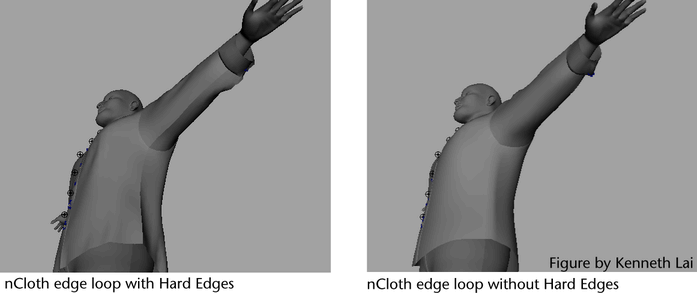The following procedure details how you can make an nCloth retain its deformed shape. For example, you can create a crushed
cardboard box or a dented metal trash can.
To dent, crush, or warp an nCloth beyond its restitution limits
- Select the nCloth object for that you want to dent, crush, or warp and have it retain its mangled state.
- In the , select the nClothShape tab.
- In the Dynamic Properties section, set the following for the nCloth:
- Restitution Angle determines how far (in degrees) the selected nCloth object can bend across an edge before it can no longer go back to its
rest angle. You can combine with Bend Resistance to simulate deforming metals.
- Restitution Tension determines how far the links in the selected nCloth object can stretch before they can no longer return to their rest lengths.
You can use to simulate a substance like silly putty being stretched.
To create ridges on nCloth that resemble creases or seams
- Select the nCloth object (output mesh) on which you want to create a ridge to mimic a seam or crease.
- Select component selection mode.
- In the menu set, select Select > Select Edge Loop Tool.
- Double-click one of the edges in the row of edges you want to crease.
All the edges in the row or loop are now selected.
- In the menu set, select Normals > Harden Edge.
The edge loop you hardened is now a ridge that resembles a seam or crease on the nCloth object. This ridge retains its shape
during its nCloth’s simulation.
 Except where otherwise noted, this work is licensed under a Creative Commons Attribution-NonCommercial-ShareAlike 3.0 Unported License
Except where otherwise noted, this work is licensed under a Creative Commons Attribution-NonCommercial-ShareAlike 3.0 Unported License

 Except where otherwise noted, this work is licensed under a Creative Commons Attribution-NonCommercial-ShareAlike 3.0 Unported License
Except where otherwise noted, this work is licensed under a Creative Commons Attribution-NonCommercial-ShareAlike 3.0 Unported License